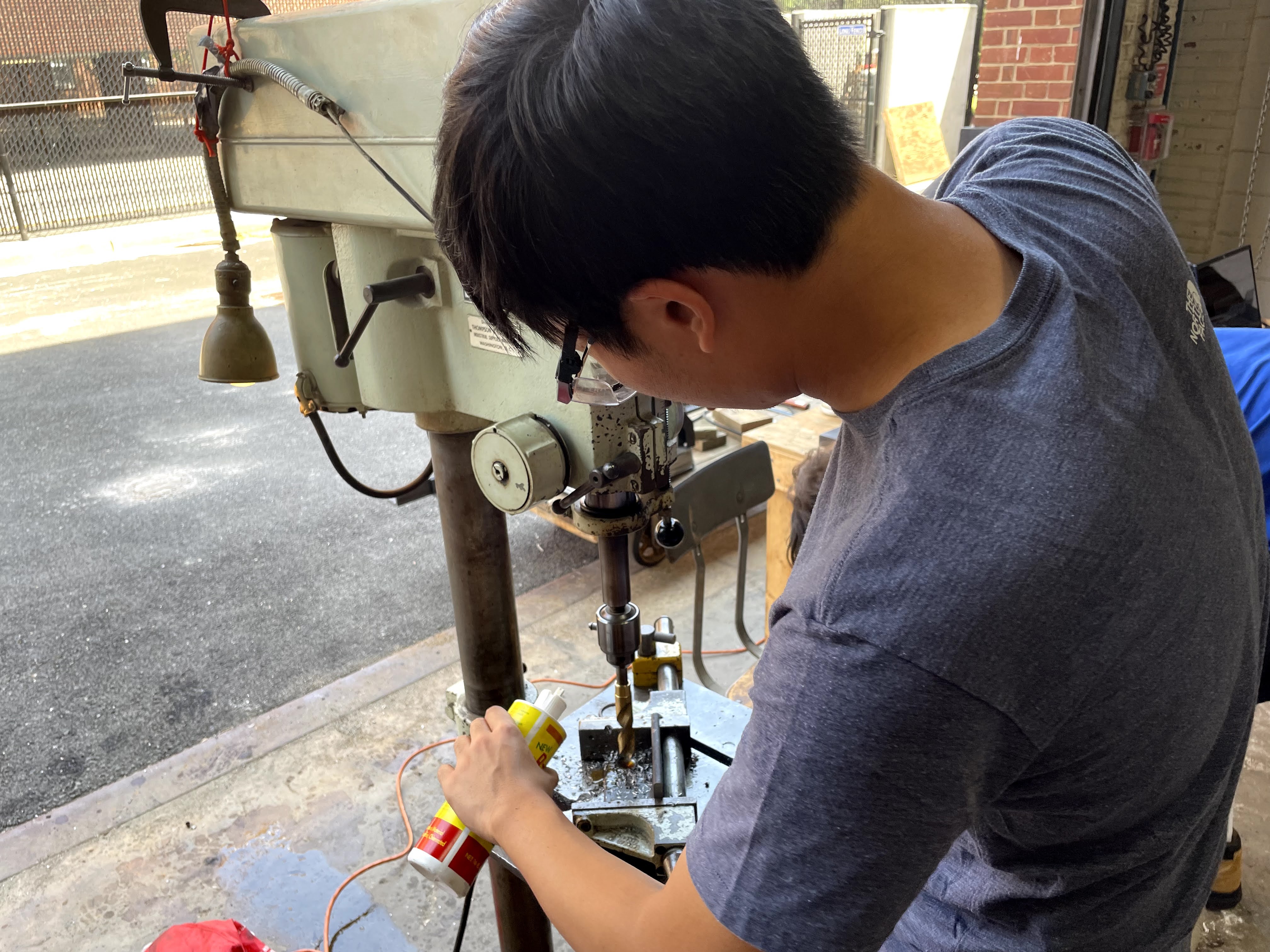Eric Kim
Excavation Tools
Designing and tolerancing various parts on the TBM
Cutterhead
At the time, the competition date was approaching very fast and our budget was limited. For a large part like the cutterhead, it would cut down on costs and lead time if holes were un-threaded and passed through the entire part. This allowed for fast processes such as plasma cutting (especially with the thickness we specced on this cutterhead). We could still fasten tools onto this cutterhead using castle nuts or another secure fastener, but it would take more time on our end to put it together (which was well worth it in our eyes).
Additionally, the thickness varied based on manufacturer's material availability. Due to a shortage of some specific alloys, we chose to pick A36 steel instead of the stronger 4140 stainless steel, making the part slightly thicker but arriving in time for the competition. Being responsible for making both the drawings and the decisions on manufacturing/tolerancing, I had to meet with the designer of this part and discuss how to change the component to reduce the lead time and price of the part.
Scraper Bits
 Along with design work, I gained experience with machining steel. Specifically, I made 10 scraper bits out of
1018 cold rolled steel bars, using bandsaws and drill presses to create the shape and mounting points for these bits. The
scraper bits are important for excavating out the soil in the compacted dirt in front of the tunnel boring machine.
Along with design work, I gained experience with machining steel. Specifically, I made 10 scraper bits out of
1018 cold rolled steel bars, using bandsaws and drill presses to create the shape and mounting points for these bits. The
scraper bits are important for excavating out the soil in the compacted dirt in front of the tunnel boring machine.
Gears

The gears were challenging to design because they were one of the last components to be designed and fitted into the assembly. This led to a lot of design choices being infeasible, and when the gears project was put in my purview, the gearbox was just a set of spur gears. Because there were only two gears, there were large stresses between them.
The material chosen was O1 tool steel, which is on the stronger end of steel alloys and meant for high stress, low RPM application like ours. Using calculations online, I ensured that the teeth would survive the torque delivered from the motors and the expected fatigue would not cause failure of the gear teeth.